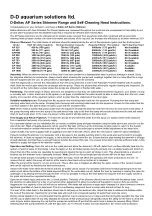
HX Pool and Spa Heater
Page 8
MAINTENANCE
It is recommended that you check the following at least every six months and at the beginning of
every swimming season.
1.
Examine the balanced flue or indoor draught diverter. Make sure there are no obstructions to
the flow of air to, or flue products from, the appliance.
2.
Visually check the burner flames. If the flame appears yellow, the burner should be cleaned
by a qualified service technician.
3.
Keep the heater area clear and free of combustibles and flammable liquids. Chlorine should
not be stored in the vicinity of the heater. Chlorine vapours, when drawn through a heater, can
rapidly cause corrosion of the heat exchanger.
4.
Keep the heater area free from garden refuse and debris. This will help prevent insects nesting
in the unit and ensure extended life and reliability of your heater.
ENERGY SAVING TIPS
1.
If possible, keep pool or spa covered when not in use. This will not only cut heating costs, but
will also keep dirt and debris from settling in the pool and conserve chemicals.
2.
Reduce pool thermostat setting to 28
˚
C or lower. This is accepted as a comfortable and
healthy swimming temperature.
3.
Use an accurate thermometer.
4.
Set timeclock to start filtration and circulation system no earlier than daybreak. The pool loses
less heat at this time.
5.
For pools that are only used on weekends, it is not necessary to leave the thermostat set at
28
˚
C. During the week, lower it by an amount that can easily be achieved in one day
(generally 5
˚
C to 8
˚
C).
6.
During the winter or while on vacation, turn the heater off.
7.
Set up a regular program of preventative maintenance for the heater each new swimming
season. Check heat exchanger, controls, burner operation etc.
WINTER OPERATION
If the pool won’t be used for a month or more, turn the heater off at the main gas valve. For areas
where there is no danger of freezing, water should circulate through your heater all year long even
though you are not heating your pool.
Where freezing is possible, it is necessary to drain the water from the heater. This may be done by
loosening the inlet or outlet barrel union. If the heater is below water level, isolate it from the pool
first by closing shut off valves before and after the heater.
CAUTION: If the heater has been drained for freezing conditions, do not turn on until the system
is circulating water.




































